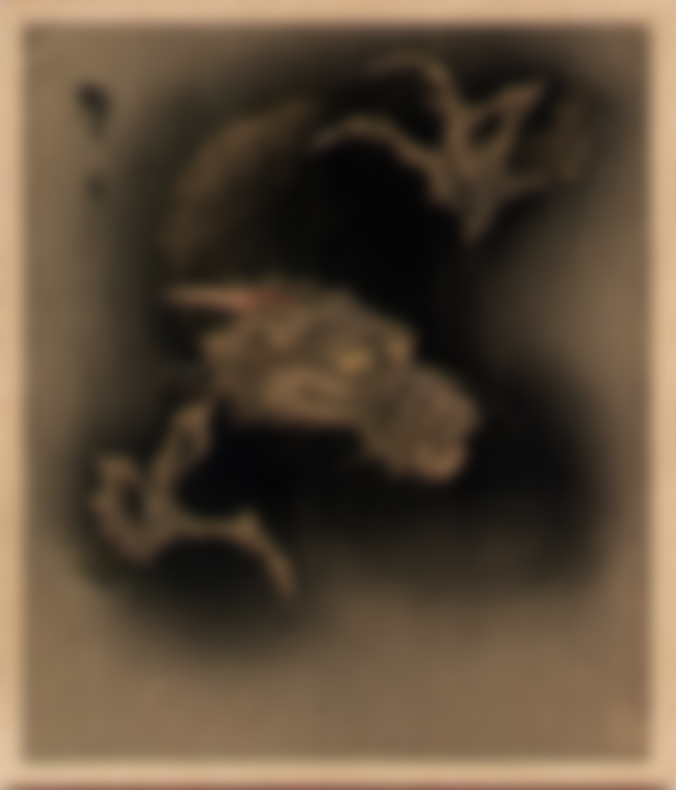Some time ago I saw a Japanese film from 1957, Osaka Monogatari, A story from Osaka, directed by Kōzaburō Yoshimura, after a story by Kenji Mizoguchi. It is set in Samurai age Japan, but the story is like a fairy tale, with a moral. It was about a poor man, Omiya, and his family becoming wealthy - and how Omiya's mind was corrupted by money. Indeed, he loved his wealth so much that he refused his wife the medicine she needed, although he could well afford it. She died. He also alienated his children, but did not really care for anything else than his wealth. In the end he laughingly embraced his treasures and said he would never leave them, he would even bring them with him when he died. He had gone totally mad.

Omiya wanted to marry his daughter off with the son of a widow who was as greedy as he was himself. In the end, when their plans failed and her son did run away with another girl and Omiya's daughter decided to leave with the man she loved, this woman did not react as Omiya. When she saw his reaction, she became shocked, and her own reflection was sadness over that she had lost her son. She, too, was pathologically greedy, but she could see at least some other value in life.
Had this story been set in an old Germanic environment, Omiya would have become a dragon. The Germanic dragon originally was a wealthy man who refused to die because of love for his gold. That's why many dragons in the stories of the West are jealously watching over their gold.
Fafnir, of Old Germanic/Norse mythology, is one. It is the story about Siegfried or Sigurd, who slew the dragon Fafnir. As the story tells it, Fafnir had murdered his father, Hreithmar, to get his gold. Odin/Wotan had given Hreithmar the gold as compensation for the loss of a son. But Odin had put a curse on it. Sigurd, after slaying Fafnir, cooked his heart (dragon heart). When he touched it, he burned his thumb. When he then put his thumb in his mouth, he (for some reason) became able to understand the speech of birds.
However, for modern readers, the most well-known gold-watching dragon might very well be Tolkien's Smaug, from the novel The Hobbit, 1937.
In the Japanese tradition, dragons have no such connection to greed or gold. So, in Osaka Monogatari, Omiya is saved the fate of changing to a dragon. However, the story is good and the movie is well done. It is well worth a look.

The dragons of East Asia are strong, powerful, and wise, mostly without evil connotations. There are some small local differences. One is that, although there are a few exceptions, Japanese dragons normally have three claws, while Chinese have four, except when they represent the emperor, then they have five. Above we can see the Chinese Flag under the Qing dynasty (1889-1912). This is an imperial dragon with five claws.
Next we have a Japanese dragon by Hokusai (1760-1849). Note that it has three claws. A detail that is emphasised.

Carps are common motives in East Asian art, and we find them often in ukiyo-e. They symbolise “achievement against adversity”. To succeed against all odds.
There is a legend from China, about carps making the “leap through the Dragon's gate”. That is a story, originally about a waterfall in the Yellow River. When carps manage to climb up, they are transformed to dragons. Making “the leap through the Dragon's Gate” was a metaphor for a success in passing imperial examinations, but can be used about any success made possible only through hard work.
This legend exists also in Japan, and in Zen Buddhism one can talk about “the transformation from fish to dragon”. It expresses spiritual advancement.
As for deeply rooted dragon symbolism today, there is a small contemporary country, bordering to China, where it penetrates the very base of state and ruler. That country is Bhutan.
The official name of the country is Druk yul, which means The Dragon People, or The Land of the Thunder Dragon.
The King's official title in Dzongkha (the local language) is Druk Gyalpo, Dragon King.
The Bhutanese flag depicts a dragon.

Related article:
"Mar Girgis - St. George & the Dragon"
Copyright © 2020 Meleonymica/Mictorrani. All Rights Reserved.
My articles related to dragons can be found here.
You find all my writings on Read.Cash, sorted by topic, here.
If you are interested in history, join my community History, Myths, Legends & Mysteries (be45), or if you are interested in Japanese art and history, join Japanese Art & Cultural History (7cf1)




Such an amazing article sir...thank you very much for sharing this article with us.